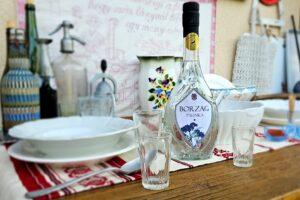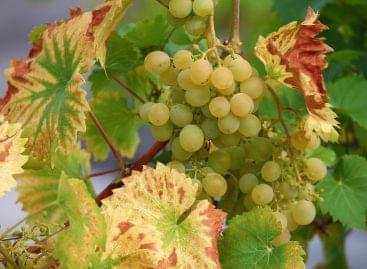New domestic products are under EU protection
The European Commission has registered the names of three new Hungarian agricultural products, namely Borzag pálinka, Sárréti kökénypálinka and Szabolcsi apple. This brought the number of Hungarian geographical indications under EU protection to 85. With this, the names of 32 Hungarian foods, 38 Hungarian wines and 15 Hungarian pálinka are protected in the EU. This EU protection system protects those agricultural products that come from a demarcated geographical area and whose production is based on a process linked to this geographical area.

The production of Borzag pálinka goes back centuries in Nógrád county, which can only be produced in commercial pálinka distilleries of Nógrád county, from the drupe fruit of the wild elderberry, also known as badger, from the area of the county. The region’s weakly acidic compacted soil and the unique climatic conditions, cool, humid and shady places are favorable for the fruit. Thanks to the environmental conditions, the bitter taste of the badger grown in the region contributes significantly to the marzipan flavor and spicy character of Borzag pálinka. Thanks to the high volatile matter and dye content of the berry crop, sweet characters also appear among the aromatic notes of the pálinka, and the rested pálinka sometimes acquires a faint yellowish tint.
The raw material of pálinka grows in the wild
Sárrét kökenypálinka is produced only from the commercial brandy distilleries of the districts named Sárrét in Hajdú-Bihar and Békés counties, from the wild-grown kökeny there. Due to the mineral-rich soil of the geographical area and the high hours of sunshine exceeding 2,500 hours, the tea grown in the geographical area is richer than average in minerals and aromas. Thanks to the unbroken saffron seeds put back into the mash of the Sárréti saffron pálinka made exclusively from wild fruit, the pálinka has a saffron flower aroma and almond flavor, and thanks to the high sugar content of the fruit, it tastes slightly sweet and reminiscent of marzipan. The high mineral and aromatic content of kéköny results in a higher volatile content of the brandy made from it.

The reputation of Hungarian apple growing was founded on the Szabolcsi apple
The professional knowledge of growing Szabolcsi apples is passed down from generation to generation in the demarcated geographical area. The Újfehértói Research Institute of the University of Debrecen, which has a history of more than 70 years, supports the transfer of modern knowledge about apple cultivation with variety maintenance, the production of qualified propagating material and expert advice. The purpose of the authorized Szabolcs Apple Producers Group is to build on the traditions of Szabolcs apple growing, to produce, process and promote the consumption of high-quality eating apples that meet the challenges of the times and sustainably grown.
In addition to legal protection, geographical indication protection increases the product’s distinctiveness in commerce, and helps the consumer in making a purchase decision, and the producer in promoting his product.
AM
Related news
Increased laboratory capacity to combat grapevine golden yellow disease
🎧 Hallgasd a cikket: Lejátszás Szünet Folytatás Leállítás Nyelv: Auto…
Read more >Milk powder and butter prices fell on the world market
🎧 Hallgasd a cikket: Lejátszás Szünet Folytatás Leállítás Nyelv: Auto…
Read more >EU Council approves changes to agricultural rules to boost competitiveness
🎧 Hallgasd a cikket: Lejátszás Szünet Folytatás Leállítás Nyelv: Auto…
Read more >Related news
How do young adults celebrate?
🎧 Hallgasd a cikket: Lejátszás Szünet Folytatás Leállítás Nyelv: Auto…
Read more >Vajda-Papír celebrates Ooops!’s 15th anniversary with a hybrid AI campaign
🎧 Hallgasd a cikket: Lejátszás Szünet Folytatás Leállítás Nyelv: Auto…
Read more >Pre-holiday shopping at up to half price
🎧 Hallgasd a cikket: Lejátszás Szünet Folytatás Leállítás Nyelv: Auto…
Read more >






